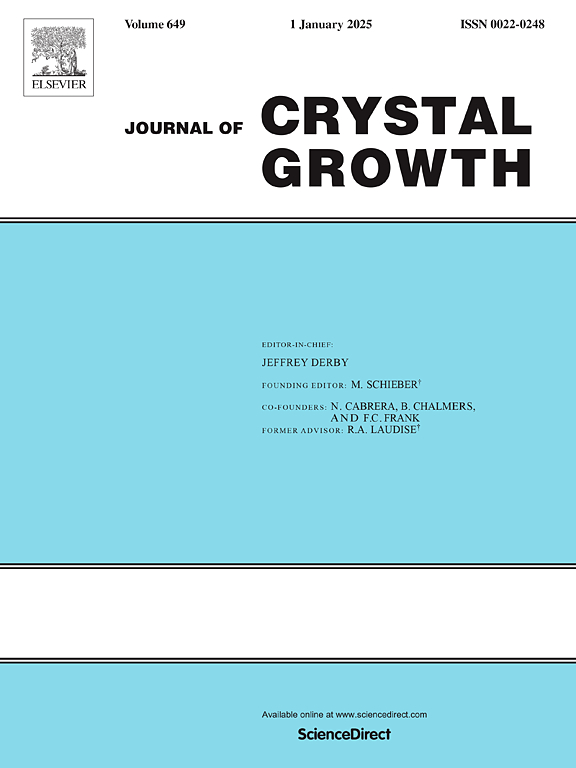番荔枝果实为基础的氧化锌纳米颗粒植物合成及其抗氧化、抗菌和光催化降解纺织染料的研究
IF 1.7
4区 材料科学
Q3 CRYSTALLOGRAPHY
引用次数: 0
摘要
将纺织染料释放到水系统中会增加耐多药生物(MDR)的流行,这可能对人类和动物的健康产生有害影响。该方法在有效去除废水处理中的多药耐药(MDR)生物和有害染料以达到环境修复的目的方面具有很大的前景。本文介绍了以番荔枝果提取物为还原剂,采用绿色生产方法制备新型氧化锌纳米颗粒(ZnONPs)。采用紫外可见光谱(UV-Vis)、x射线衍射(XRD)、傅里叶变换红外(FT-IR)光谱、场发射扫描电镜(FE-SEM)和能量色散x射线光谱(EDX)对生物合成的ARF-ZnONPs进行了分析。绿色合成的ARF-ZnONPs对革兰氏阳性菌和革兰氏阴性菌的抑菌效果进行了评价。此外,还测定了偶氮染料(亚甲基蓝和活性红120)在阳光直射下的降解情况。紫外可见光谱显示,ARF-ZnONPs在369 nm处有最大吸收峰。本研究通过FT-IR分析发现,ARF-ZnONPs的成核和稳定性受到A. reticulata果实提取物中酚类化合物、生物碱、萜类化合物和蛋白质的影响。ARF-ZnONPs的XRD谱图显示为六方纤锌矿晶体结构,平均粒径约为52 nm。EDX光谱证实了Zn元素的存在,FE-SEM图像呈现六边形结构。对金黄色葡萄球菌和铜绿假单胞菌的最大抑制面积分别为21.23±0.35 mm和19.34±0.26 mm。测定了ARF-ZnONPs在阳光直射下对偶氮染料(MB和rr120)的降解情况,评价了ARF-ZnONPs的光催化效率。因此,上述研究结果表明,使用无害环境的方法合成的ARF-ZnONPs可以用于多种抗菌和环境应用。本文章由计算机程序翻译,如有差异,请以英文原文为准。
Annona reticulata fruit-based phytosynthesis of zinc oxide nanoparticles and assess antioxidant, antibacterial and photocatalytic degradation of textile dyes
The release of textile dyes into water systems poses a significant risk of increasing the prevalence of multidrug-resistant (MDR) organisms, which can have a detrimental effect on the health of both humans and animals. The efficacy of this method in the efficient removal of multidrug-resistant (MDR) organisms and deleterious dyes from effluent treatment for the purpose of environmental remediation is highly promising. The present study introduces novel zinc oxide nanoparticles (ZnONPs) that are made using Annona reticulata fruit extract as a reducing agent in a green production method. We employed UV–Vis spectroscopy, X-ray diffraction (XRD), Fourier-transform infrared (FT-IR) spectroscopy and field emission scanning electron microscopy (FE-SEM) with energy dispersive X-ray spectroscopy (EDX) to analyse the ARF-ZnONPs that were generated through biosynthesis. The antibacterial effects of green synthesised ARF-ZnONPs were evaluated against both gram-positive and gram-negative bacteria. In addition, the degradation of azo dyes (methylene blue and reactive red 120) was measured under direct sunlight exposure. The ARF-ZnONPs were obtained with an absorption peak maximum at 369 nm, as evidenced by the UV–Vis spectrum. According to the research, the nucleation and stability of ARF-ZnONPs are influenced by phenolic compounds, alkaloids, terpenoids, and proteins present in the fruit extract of A. reticulata, as demonstrated by FT-IR analysis. A hexagonal wurtzite crystal structure is demonstrated in the XRD pattern of ARF-ZnONPs, with an average particle size of approximately 52 nm. The EDX spectrum verified the presence of the element Zn, and the FE-SEM image featured a hexagonal architecture. Against S. aureus, the maximum area of inhibition was 21.23 ± 0.35 mm, while against P. aeruginosa, it was 19.34 ± 0.26 mm. The degradation of azo dyes (MB and RR 120) was measured under direct sunlight exposure to evaluate the photocatalytic efficiency of ARF-ZnONPs. Thus, the aforementioned findings indicate that the ARF-ZnONPs synthesised using the environmentally benign method can be employed for a diverse array of antibacterial and environmental applications.
求助全文
通过发布文献求助,成功后即可免费获取论文全文。
去求助
来源期刊

Journal of Crystal Growth
化学-晶体学
CiteScore
3.60
自引率
11.10%
发文量
373
审稿时长
65 days
期刊介绍:
The journal offers a common reference and publication source for workers engaged in research on the experimental and theoretical aspects of crystal growth and its applications, e.g. in devices. Experimental and theoretical contributions are published in the following fields: theory of nucleation and growth, molecular kinetics and transport phenomena, crystallization in viscous media such as polymers and glasses; crystal growth of metals, minerals, semiconductors, superconductors, magnetics, inorganic, organic and biological substances in bulk or as thin films; molecular beam epitaxy, chemical vapor deposition, growth of III-V and II-VI and other semiconductors; characterization of single crystals by physical and chemical methods; apparatus, instrumentation and techniques for crystal growth, and purification methods; multilayer heterostructures and their characterisation with an emphasis on crystal growth and epitaxial aspects of electronic materials. A special feature of the journal is the periodic inclusion of proceedings of symposia and conferences on relevant aspects of crystal growth.
 求助内容:
求助内容: 应助结果提醒方式:
应助结果提醒方式:


